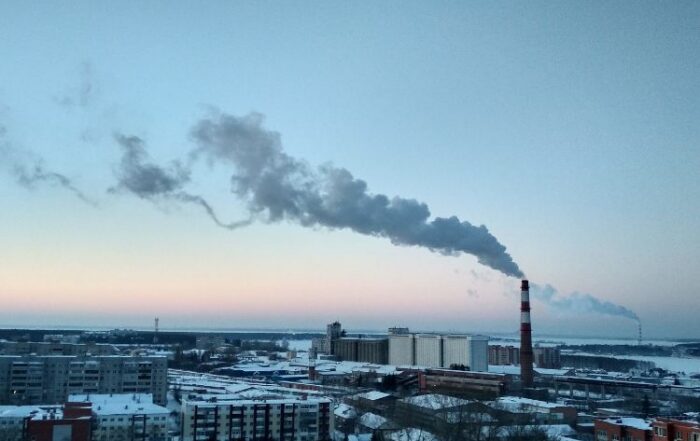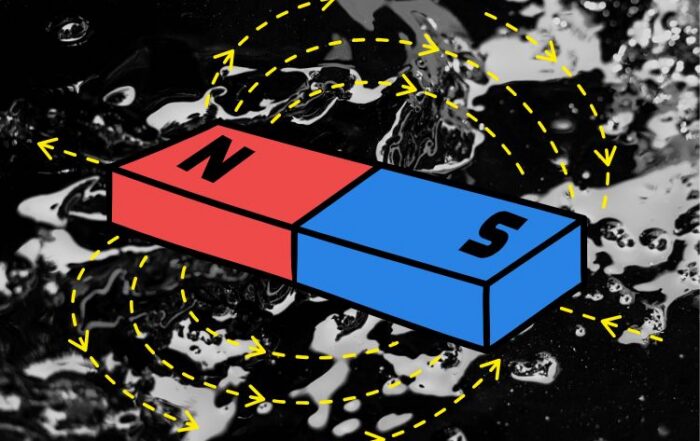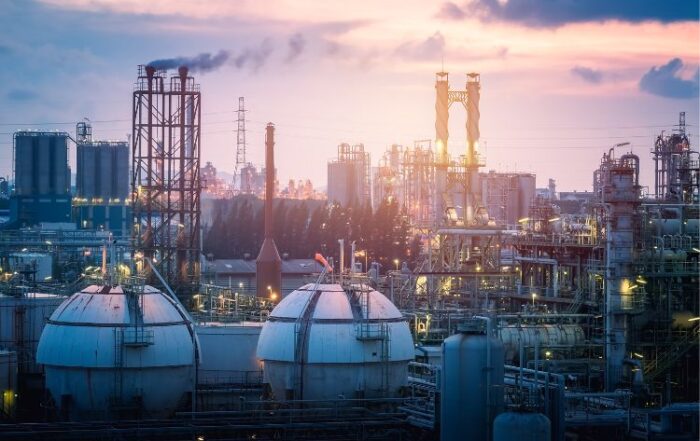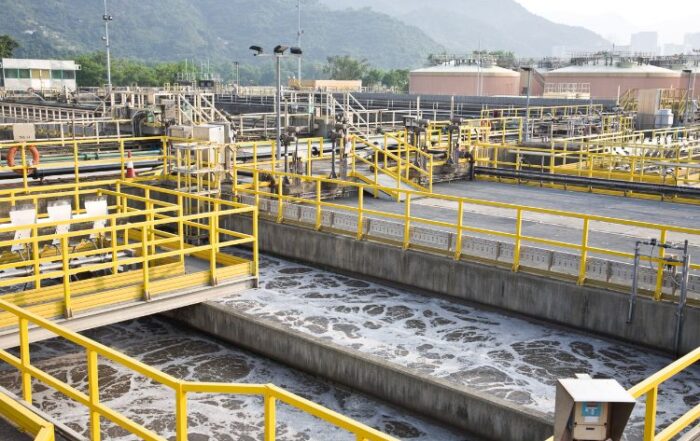
Landfills and Digestors Biogas Desulphuration
The energetic valorization in cogeneration engines of biogas produced in landfills, waste water treatment plants and methanation processes, has brought the need for elimination of certain harmful compounds for such engines. Mainly:
- Sulfhidric (H2S)
- Cause degradation of the oils, shortening its meantime life with the consequent cost of maintenance
- Produces corrosion in the engine
- Siloxanes
- They are silicone derivatives which are subsequently decomposed into silica and silicates
- Cause abrasion on the heads of the valves and precipitates in the chamber
TECNIUM has developed diferent technologies that can be applied, based on criteria of:
- Limits required by engine manufacturers
- Accepted operating costs
- Services available in the plant
Based on the above parameters the different technologies are:
Biological Treatment
The biogas is treated in a bioscrubber, on a special inorganic packing, where a biofilm is generated that will cause the oxidation of H2S in the presence of oxygen and an adequate supply of nutrients.
Installations suitable for concentrations up to 4000ppm.
Involve high investment but low exploitation costs.
Chemical Treatment
In cases where the presence of H2S is high, a chemical process of oxidation / reduction in countercurrent scrubbers is required.
Are applications for up 10.000ppm tipically on waste landfills with highly variable compositions depending on the area.
If the concentration is lower, alkaline chemical treatment may be sufficient.
The investment costs are low, but the exploitation is important due to reagent consumption and generation.
Adsorption Treatments
By using appropriate activated carbon medias, H2S removal is achieved at low concentrations.
Making a “mix” of carbons, siloxanes can also be removed. The saturation of carbon used, autonomy and subsequent regeneration, are determining factors when selecting this solution.
TECNIUM makes complete installations, even in classified areas ATEX, selecting the best technology.
More information
Give us your contact details and we will advise you on the best solution for your application.
View also
How Gas Scrubbing Technologies Will Drive Decarbonisation in the Chemical Sector
Decarbonisation as the Urgent Challenge for the Chemical Industry The chemical industry is entering one of the most transformative decades in its history. As regulatory pressure intensifies and global climate targets advance, [...]
Tecnium to attend PCH Meetings 2025 in Lyon
Leading Innovation in Chemical Process Equipment Tecnium will participate in the 21st edition of PCH Meetings, the leading international business convention for process, chemical, petrochemical, and pharmaceutical industries, to be held on [...]
Magnetic Drive Pumps: The Science Behind Leak-Free Chemical Transfer
Why Magnetic Drive Technology Matters In industrial environments where safety, reliability, and chemical containment are critical, even a small leak can have major consequences. Traditional centrifugal pumps, which rely on mechanical seals [...]
Biofiltration for Air Pollution Control
Introduction to Biofiltration and Air Pollution Control Air pollution control is a persistent challenge across multiple industries — from wastewater treatment to chemical manufacturing, food processing, and beyond. As regulations grow stricter [...]
ECHA 2025 Report
Why the ECHA 2025 Report Matters The European Chemicals Agency (ECHA) plays a central role in regulating the safe use of chemicals across the European Union. Through its guidance, risk assessments, and [...]
A Key Element for Environmental Protection in WWTPs
Why Gas and Odour Emissions in WWTPs Are an Environmental Issue Wastewater treatment plants (WWTPs) play a critical role in safeguarding public health and the environment. However, the treatment process itself can [...]










